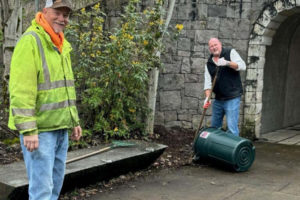An environmental report on the proposed Millennium Bulk Terminals coal-by-rail project released last week has found “adverse impacts” in 19 of the 23 environmental study areas.
If the project is approved, Millennium Bulk Terminals will construct a coal export terminal on a 190-acre site in Longview, Washington. Trains, carrying coal from Montana, Wyoming, Utah and Colorado to the terminal, will bring 44 million metric tons of coal per year through Washington — and add 16 mile-and-a-half-long trains per day to rail lines passing through Washougal, Camas and Vancouver in Clark County.
The in-depth report, completed by Cowlitz County and the Washington Department of Ecology, relied on scientific methods, computer models and data to evaluate potential environmental impacts of the proposed coal-by-rail terminal. The report, known as the Final Environmental Impact Statement (FEIS) is not an official decision or permit for the project, but will be used by the agencies responsible for granting permits to the Millennium Bulk Terminals project.
According a the Department of Ecology press release sent to media outlets on Friday, some key findings of the report include:
An increase in locomotive diesel particulate matter, a toxic air pollutant, which “is expected to cause an unavoidable increase in cancer risk rates in a neighborhood along the rail line in Longview, (Washington);”



